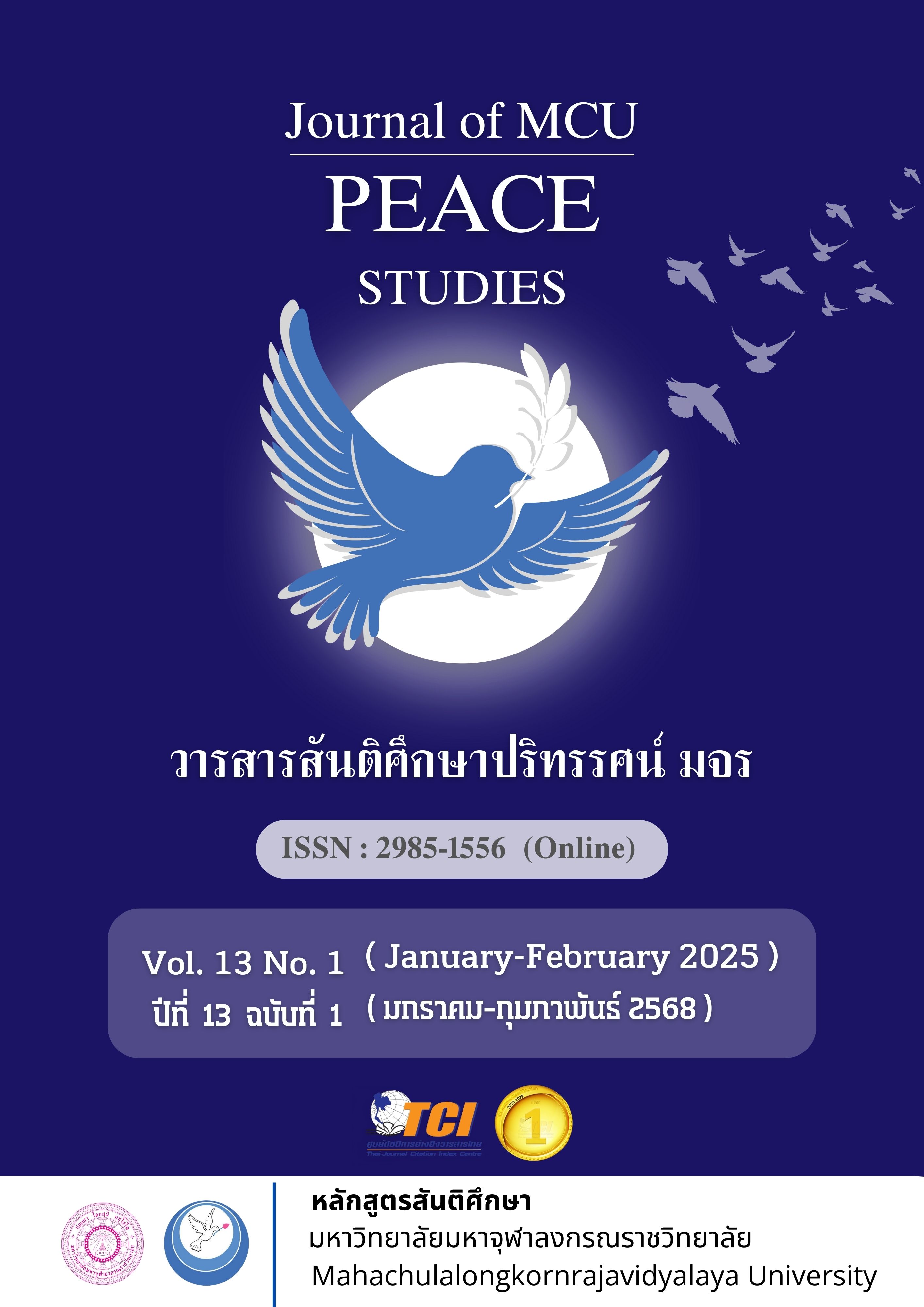Lanna Yantra: Its History, Value and Process of Art Creation in Lanna
Main Article Content
Abstract
The study had the following objectives: 1) to investigate the history, background, and value of Lanna yantra; 2) to develop the process of art creation based on the local wisdom of yantra in Lanna; and 3) to enhance the development of creative art products derived from the local wisdom of yantra in Lanna. The study employed a qualitative research method, with data collected from documents related to Buddhist beliefs, Lanna local wisdom and beliefs, amulets, the performance of rituals by Lanna people, and 31 individuals interested in Lanna yantra. The research tools included in-depth interview forms and focus group discussion forms. The data obtained were analyzed using content analysis.
The following results were found from the study: 1) The belief in Lanna yantra is inherited from the local wisdom of yantra in Lanna, which is influenced by Buddhist teachings. This belief includes the use of Lanna scripts and Lanna yantra as sacred amulets for protection from danger. Lanna yantra has a spiritual influence, providing encouragement and strength for people to lead a happy life. It has also been used in creative art and culture, integrating beliefs in spirits as well as religious beliefs, such as those of Brahmins and Buddhists, which have been passed down from the past to the present. 2) The process of art creation based on Lanna local wisdom involves the integration of knowledge from Lanna folk art, which is deeply connected to the lives of the Lanna people. This process focuses on developing creative products that embody Lanna identity, starting from the individual to the temple, community, and public spaces. Art and products related to Lanna yantra are developed by applying local wisdom, which includes the preservation and transmission of Lanna traditions. This process fosters the development of local wisdom and potential, stemming from personal beliefs, rituals, and teachings on Lanna yantra passed down from ancestors. Creative work represents an evolution that still incorporates local wisdom, while adhering to the practices, beliefs, and values that are central to Lanna culture. 3) The development of creative art products based on the local wisdom of Lanna yantra demonstrates how the traditional Lanna methods of writing on materials such as rice paper, palm leaves, banana leaves, cloth, animal horns, and wood have evolved. Due to the large sizes and intricate patterns of these original formats, the idea emerged to create a more portable version, while still preserving the unique identity of Lanna. This led to the transformation of Lanna yantra from its original format to a more compact and aesthetically pleasing version. The process involved learning from Lanna yantra masters, exchanging knowledge with experts, and drawing on the experiences of Lanna yantra practitioners. This resulted in the creation of creative art products rooted in the wisdom of Lanna yantra, fostering attitudes and beliefs among new generations interested in yantra art. The goal is to maintain its unique identity as a valuable form of art that should be preserved for future generations.
Article Details

This work is licensed under a Creative Commons Attribution-NonCommercial-NoDerivatives 4.0 International License.
Views and opinions expressed in the articles published by The Journal of MCU Peace Studies, are of responsibility by such authors but not the editors and do not necessarily reflect those of the editors.
References
Chiang Mai Univercity Library. (1999). Yantras and Mantras. Retrieved October 30, 2023, from https://library.cmu.ac.th/digital_collection/digitalheritage/show.php?RecID=72&FID=6277
Chimplee, K. (2012). Knowledge Management Models for Local Wisdom in Wickerwork Handicrafts: A Case Study of Local Community Enterprises in Nakhon Ratchasima Province. (Doctoral Dissertation). National Institute of Development Administration. Bangkok.
Choibamroong, T. (2011). Wisdom for Creative Local Development. Bangkok: A.P. Graphic Design and Print Co., Ltd.
Khananurak, M. (2007). Folklore. (2nd ed.). Bangkok: Odeonstore.
Matichoweekly. (2021).Know the Types of “Lanna Yantras” from Protecting Against Spirits to Safeguarding Crops. Retrieved October 30, 2023, from https://www.matichon weekly.com/column/article_453352
Payomyong, M. (1994). Lanna Thai Twelve-Month Traditions. (3rd ed.). Chiang Mai: Sorsapprint.
Phra Bhramagunabhorn (P.A. Payutto). (2013). Dictionary of Buddhism. Bangkok: Sahadhammika Co., Ltd.
Phrakhru Sophonphatthananuyut et al. (2005). A Study on the Problems of Applying Local Wisdom in Teaching and Learning Management in Phrapariyattidhamma Schools.
Chulalongkornrajavidyalaya University, Phrae Campus. Phrae.
Phrapisnupol Suwannaroopo (Rooptong). (2011). A Study of Buddha Dhamma and Value as Appeared in Lanna Yuntian: A Case Study of Amphur Muang, Lampang Province. (Master’s Thesis). Mahachulalongkorniajavidyalaya University. Bangkok.
Pongpit, S. (2010). One Hundred Words You Should Know. Bangkok: Charoenwit Printing.
Sripasang, W. (2015). Lanna Amulet. RMUTL Journal of Business Administration and Liberal Arts, 3(1), 13-27.
Summa, N. et al. (1991). Rituals and Social Communication. Chiang Mai: Faculty of Humanities, Chiang Mai University.
Tansiri, A. (2006). Local Culture and Thai Culture. (1st ed.). Bangkok: Watana Panich Printing Co.,Ltd.
Vinitasatitkun, P., & Phramaha Chan Chirametthi (Lowalun). (2015). Folklore: Beliefs in Thai Society. Journal of MCU Humanities Review, 1(1), 31-44.
Wasi, P. (1991). Folk Wisdom and Cultural Operations. Bangkok: Office of the National Culture Commission.

